
Paid ads are getting more expensive. Clickthrough rates are down. Conversions are flat.
According to industry benchmarks, the average CAC for SaaS companies ranges between $200 and $1,000, depending on pricing model and sales cycle. For early-stage startups, even being slightly above this range can put serious pressure on cash flow and runway.
Also, for early-stage SaaS teams, every new customer feels like it costs more than the last.
Learning how to lower customer acquisition costs has become a priority, not a nice-to-have. It’s the difference between growth and burn. The difference between testing new ideas and fighting to stay afloat.
Customer acquisition cost (CAC) shows how much you spend to win a paying customer. When that number climbs faster than revenue, margins shrink and growth slows. Bootstrapped teams feel it first. You can’t outspend problems. Instead, you have to outsmart them.
In this guide, we’ll explain why CAC is rising and then break down 10 proven strategies to reduce it. Each one is based on real-world examples from SaaS companies that improved results without increasing spend. You’ll find a mix of paid and organic tactics, with a focus on ROI and long-term growth.
Customer acquisition is harder and more expensive than it was just a few years ago.
CPMs are climbing across nearly every paid channel. Facebook’s average cost per 1,000 impressions jumped by over 30% in the past year. Google Ads isn’t far behind. At the same time, targeting has gotten worse. Privacy updates and signal loss are making it tougher to reach the right people at the right time.
Even organic traffic is in decline. Social reach is throttled by algorithms. SEO takes longer to pay off, especially in competitive niches. For many SaaS teams, growth has slowed while acquisition costs keep climbing.
But the platforms aren’t the only problem.
The bigger problem is how different teams respond.
Many rely too heavily on one acquisition channel. They double down on paid ads without testing alternatives. Others ignore retention altogether, even though retaining users lowers CAC over time. Some don’t measure CAC accurately in the first place, which leads to bad decisions and wasted spend.
Here are 10 different ways to lower customer acquisition costs.
Paid media can drive fast growth, but only if you run it with discipline. Without structure, budgets disappear quickly, and CAC climbs with every test.
One way to lower customer acquisition costs is to build a testing system. Use it to improve conversion rates, cut waste, and refine your audience targeting.
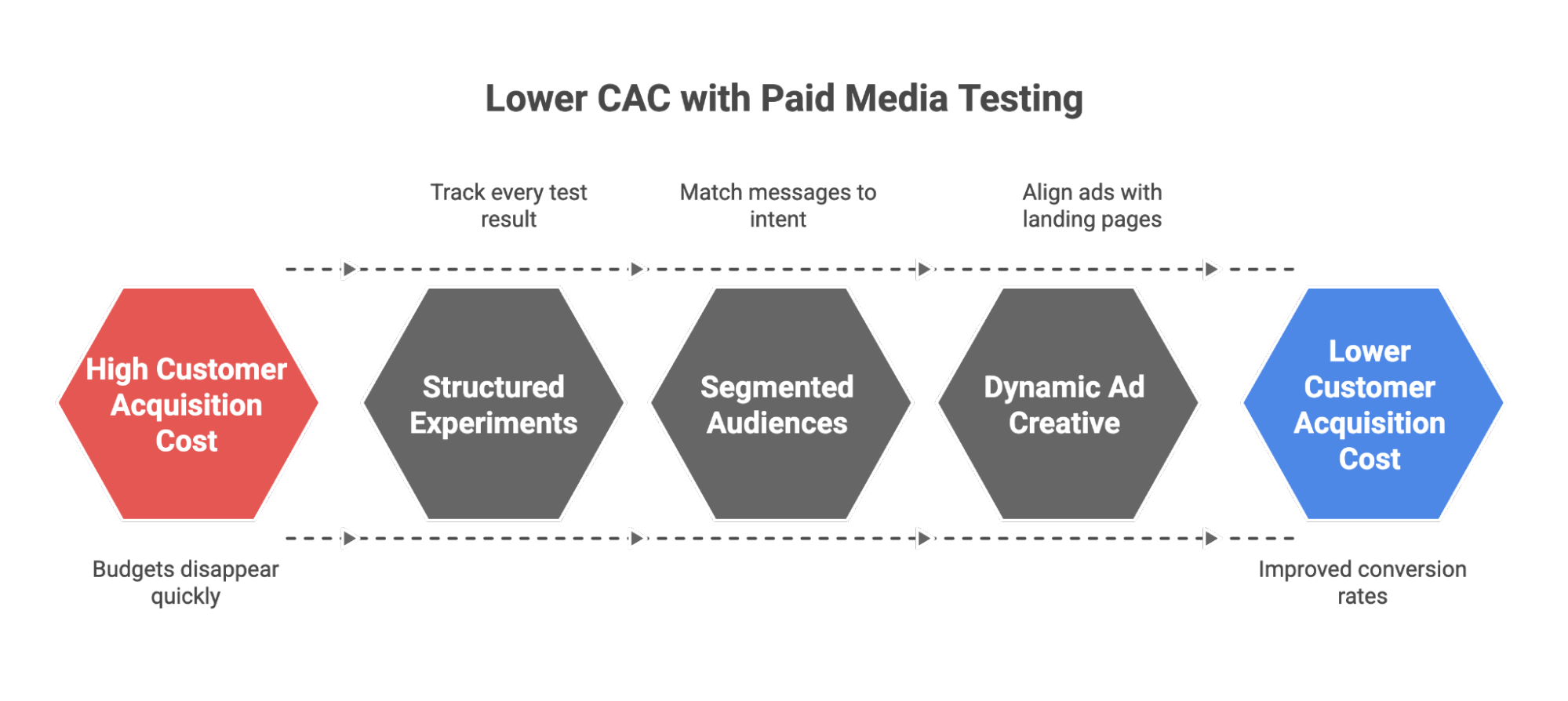
Focus on these three areas:
A good example comes from Powered by Search. When they took over paid campaigns for a B2B SaaS client, their first step wasn’t scaling. It was actually narrowing. They replaced broad ad variations with specific messages matched to intent. They also used a “Hypothesis Testing Log” to track every test and its result. Within months, the cost per sales-qualified lead dropped by 38%. Conversion rates improved by 72%.
To get similar results, start with the basics.
Track every test. Record what you’re trying to prove. Align your ads with landing pages. Invest in proper tracking so you can measure CAC, ROAS, and lead quality. Don’t just look at clicks. Invest more time in understanding what turns into revenue.
Most importantly, don’t set and forget. Keep testing.
To track the real impact of your paid media experiments, make sure you’re measuring CAC the right way. Check out the WeGrowth SaaS metrics guide for a clear breakdown of how to calculate CAC from paid campaigns accurately.
Also, if you're wondering what is a good CAC for SaaS, many experts recommend a CAC to LTV (lifetime value) ratio of 1:3 or better. That means for every $1 you spend acquiring a customer, you should make $3 or more over their lifecycle.
Acquisition doesn’t always have to come from paid ads. One of the fastest ways to lower CAC is to turn your users into your marketers.
Referral programmes work best when they reward both sides. A double-sided offer gives value to the person sharing and the person signing up. It builds trust and lowers acquisition costs because the lead is already warm.
Habito, an online mortgage broker, ran a double-sided referral programme using gift cards. They gave £50 to both the referrer and their friend. This simple reward structure helped them cut CAC by 45% and bring in 15% more new customers.
TrueProfile.io took it further. Their programme created 1,590 ambassadors who referred an average of 3.6 people each. As a result, CAC dropped from $3 to $1, and lifetime value grew from $29 to $33.
Total referral-driven growth hit 445%.
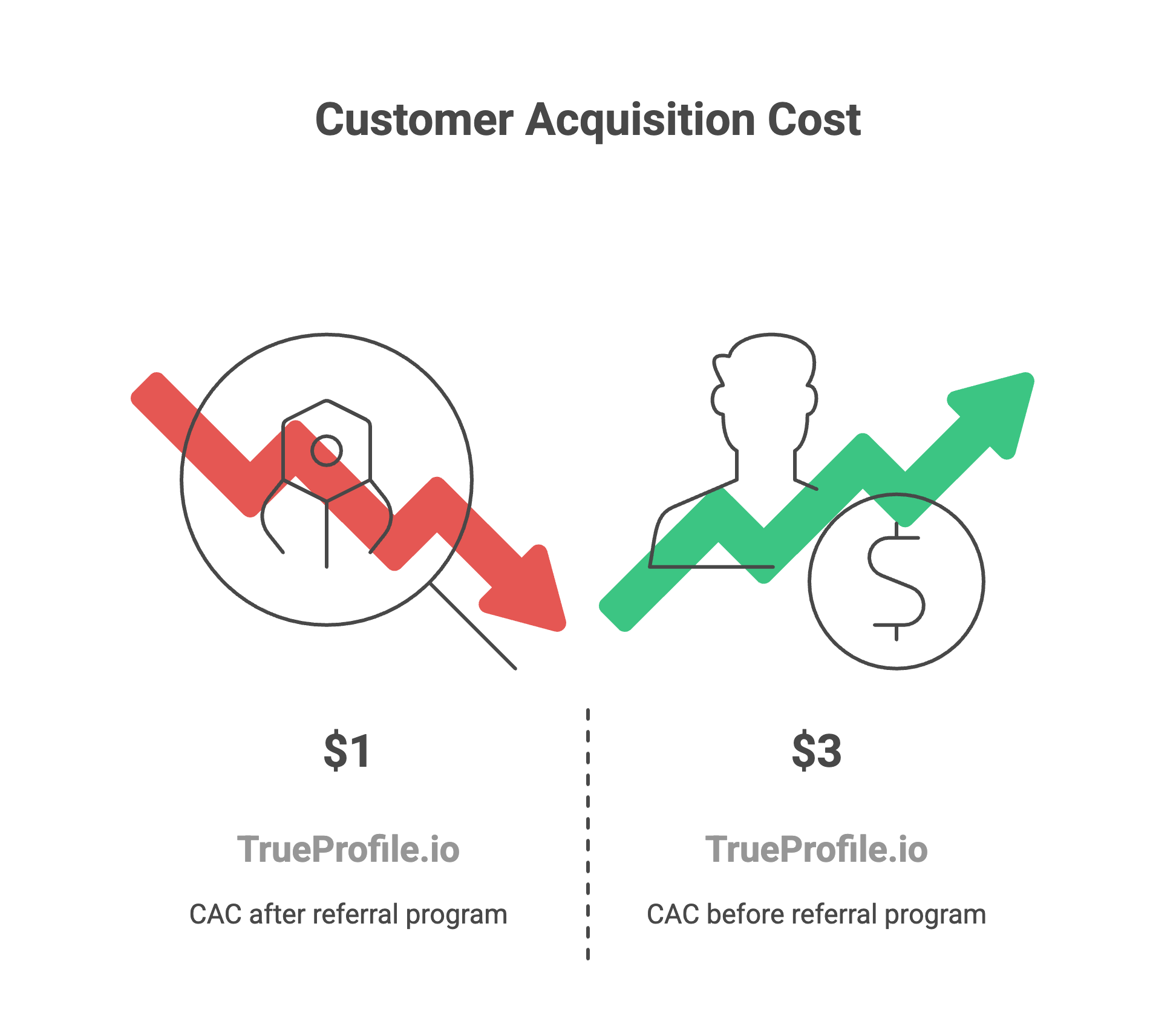
To make this work, keep the offer clear and the reward relevant. Use platforms like SaaSquatch or ReferralHero to set it up. Promote it through email and inside your product. Most importantly, track referral CAC against your paid channels. If it performs better, shift more budget there.
At WeGrowth, our SaaS PPC Agency works with SaaS teams that want more than short-term wins because we build full-funnel campaigns that combine precise audience targeting, creative testing, and ongoing optimisation to improve CAC month over month.
At WeGrowth, we like to avoid talking just about the metrics. We make sure to act on them. Our growth specialists build and execute full-funnel strategies that cut CAC, improve ROAS, and help SaaS teams scale fast, without wasting budget on low-impact channels.
Book a FREE growth strategy demo to see exactly how we do it.
If your landing pages don’t convert, no amount of paid traffic will save your CAC.
Improving conversion rates isn’t just about doing big redesigns all over again. Small changes, based on real user behavior, can make a big impact. Start by learning where users get stuck. Use heatmaps, scroll tracking, and session recordings. Then test changes with a clear goal in mind.
Campaign Monitor worked with ConversionLab to improve their sign-up flow. They tested dynamic text, exit pop-ups, and clearer calls to action. These changes led to a 260% increase in conversions and a sharp drop in CAC.
Other examples show how layout affects results. One business used LuckyOrange to spot that their CTA was too far down the page. Moving it above the fold increased conversions by 20%. In another test, Michael Aagaard found that placing the CTA at the bottom of a long landing page, where users had time to learn more, raised conversions by 304%.
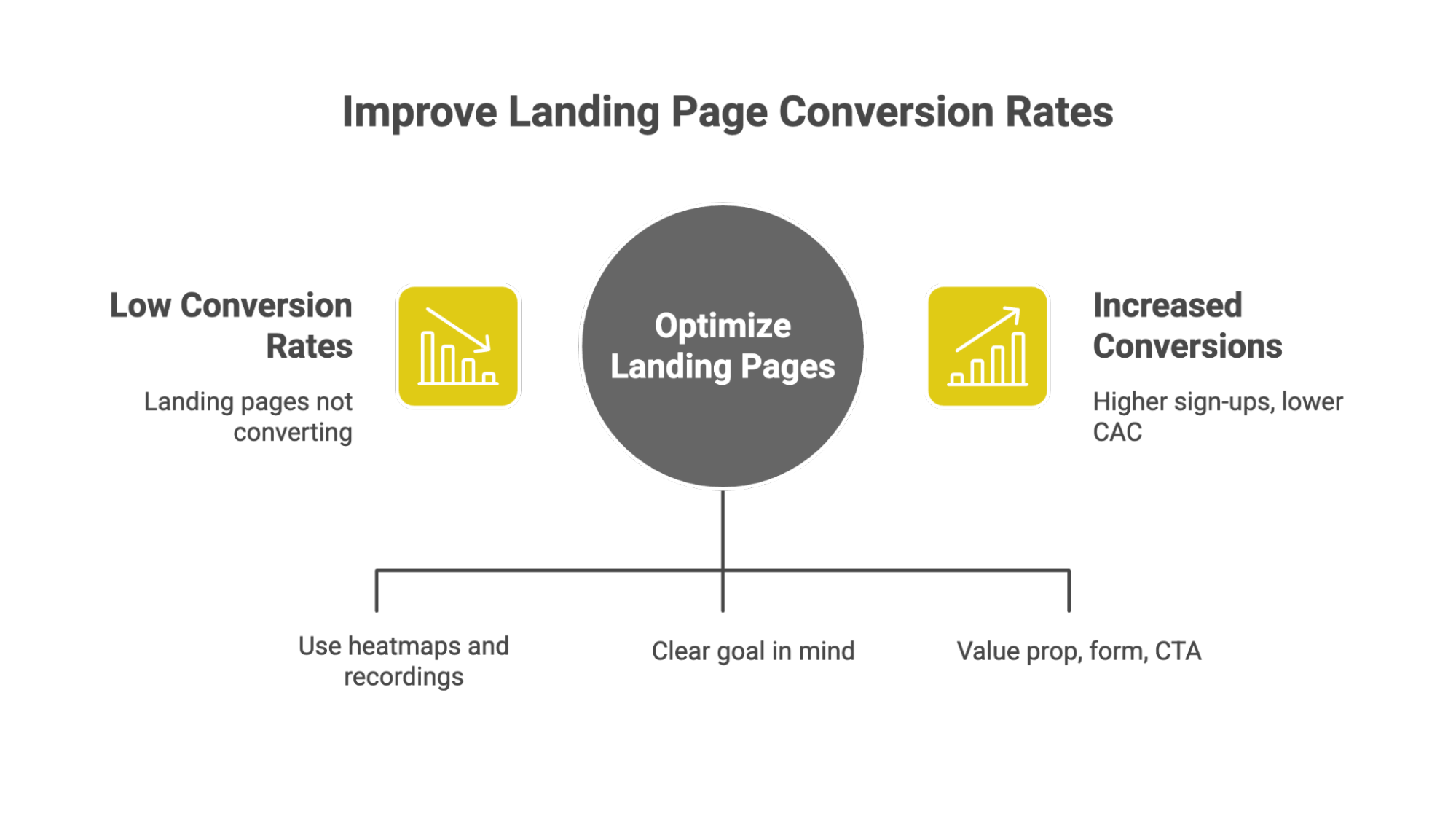
To apply this, start simple. Use heatmaps to find friction points. Test one change at a time. Focus on the elements that drive sign-ups: value prop clarity, form length, and CTA placement. The more users you convert from your existing traffic, the lower your CAC becomes.
Conversion gains are even stronger when they’re part of a bigger picture. That’s why our SaaS growth marketing services cover the full customer journey, from acquisition channels to onboarding flows and retention campaigns. We connect your paid and organic efforts with data-driven CRO to ensure every touchpoint works together to lower CAC.
Paid campaigns stop working when the budget runs out. Content doesn’t (at least not fully).
Building a content strategy helps you lower customer acquisition costs over time. When done right, SEO attracts people already searching for a solution. It builds trust before the sales pitch. And it gives your business a steady stream of leads without relying on rising ad costs.
HelloSign saw this firsthand when they decided to partner with Optimist to scale their blog. Over 17 months, they grew organic traffic by 1,308%. That traffic played a major role in their path to acquisition by Dropbox. Their CAC dropped as SEO replaced paid ads for lead generation.
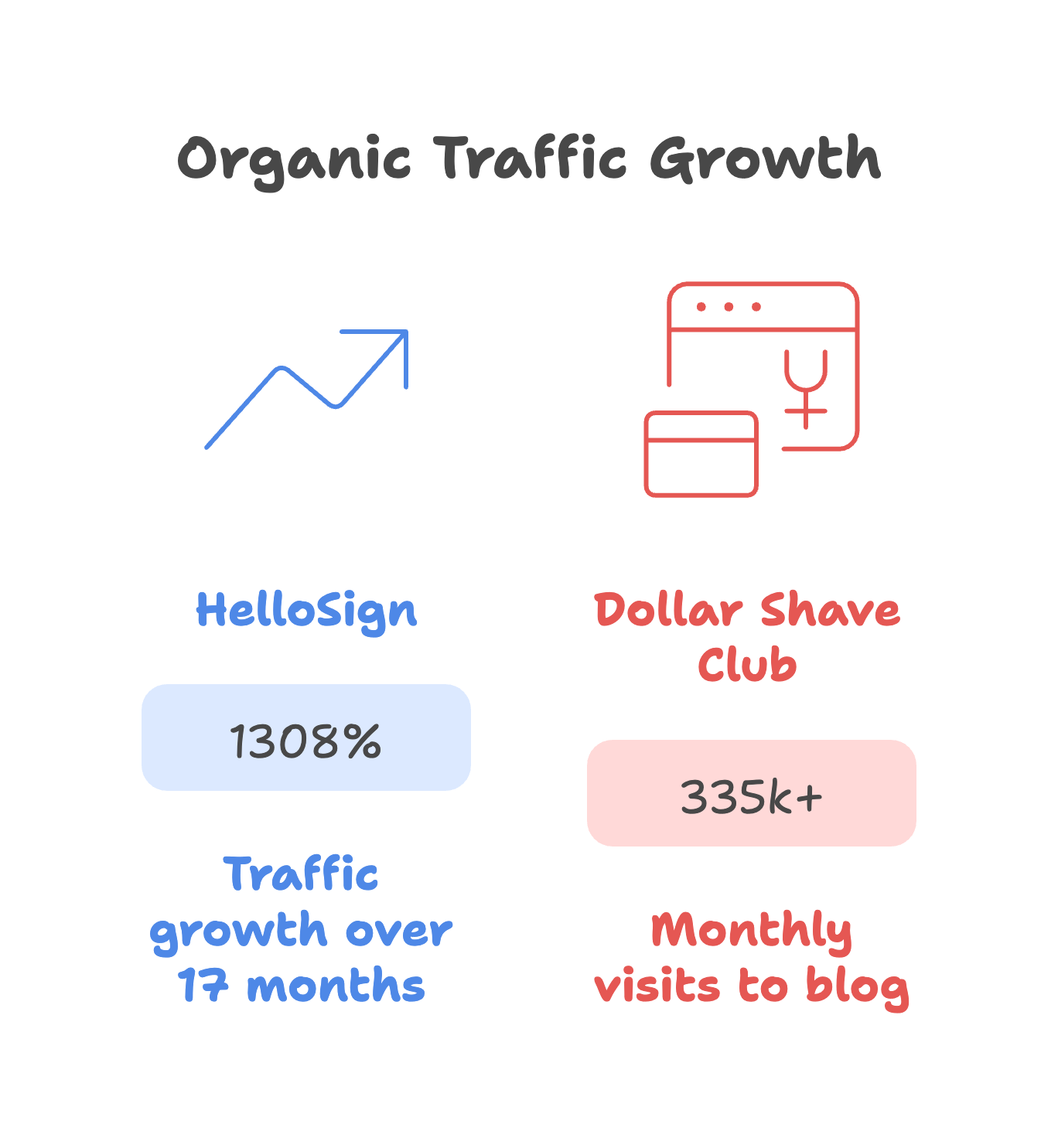
Dollar Shave Club took a different route. Their now-famous $4.5k video brought in 12,000 customers in under three days. But they didn’t stop there. Their blog, Club Chronicles, now ranks for more than 80,000 keywords and brings in 335k+ visits each month. That kind of organic reach keeps CAC down even as they grow.
Organic takes time. But once it builds momentum, it keeps working in the background, without eating your budget.
Spray-and-pray targeting burns through the budget fast. The more precise your targeting, the lower your CAC.
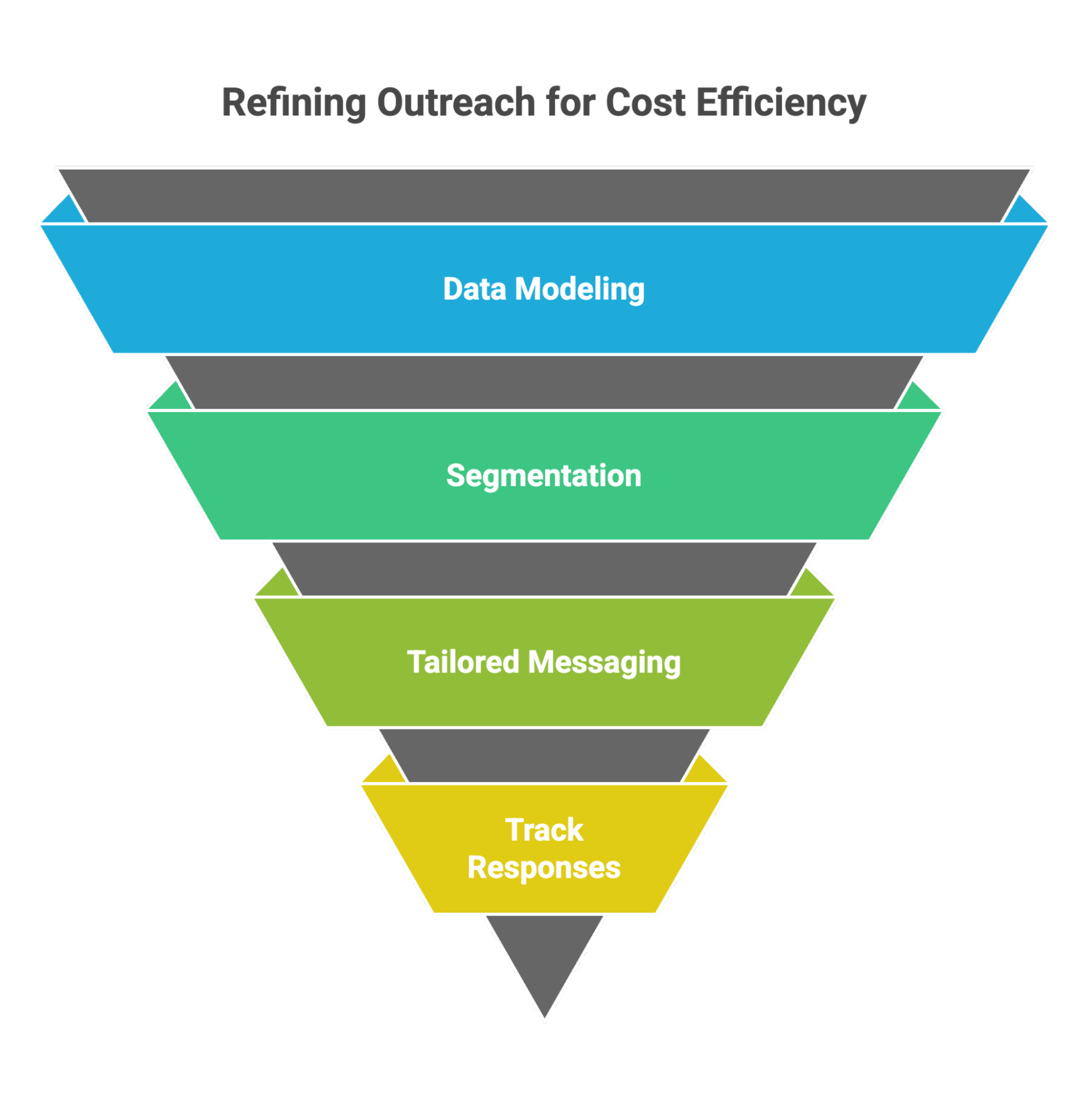
Predictive modeling and segmentation help you narrow in on the people most likely to convert. With the right data, you can group users by region, behavior, industry, or any signal that matters and then tailor your message to each group.
AMP Analytics used this approach with a telecom reseller. They built custom MicroModeling® tools for each local market. Instead of relying on one generic campaign, they tailored outreach to reflect local patterns and customer profiles. In return, the response rates doubled or tripled. Cost per acquisition dropped from $163 to $64, which is a 61% decrease.
To get started, define your ideal customer profiles clearly. Bring in third-party data or demographic insights to refine them. Adjust your messaging based on location, industry, or role. Most importantly, track how different segments respond, and use those learnings to improve future outreach.
Precision cuts waste. That’s how you lower CAC.
If you’re building personas from scratch, a customer persona template can help you structure the process. It guides you through identifying demographic data, pain points, goals, and decision-making patterns so you can tailor campaigns to the right audience. A well-defined persona helps you target more accurately, which in turn reduces wasted spend and lowers CAC over time.
Not every lead is ready to buy today. But that doesn’t mean they won’t convert later if you stay on their radar.
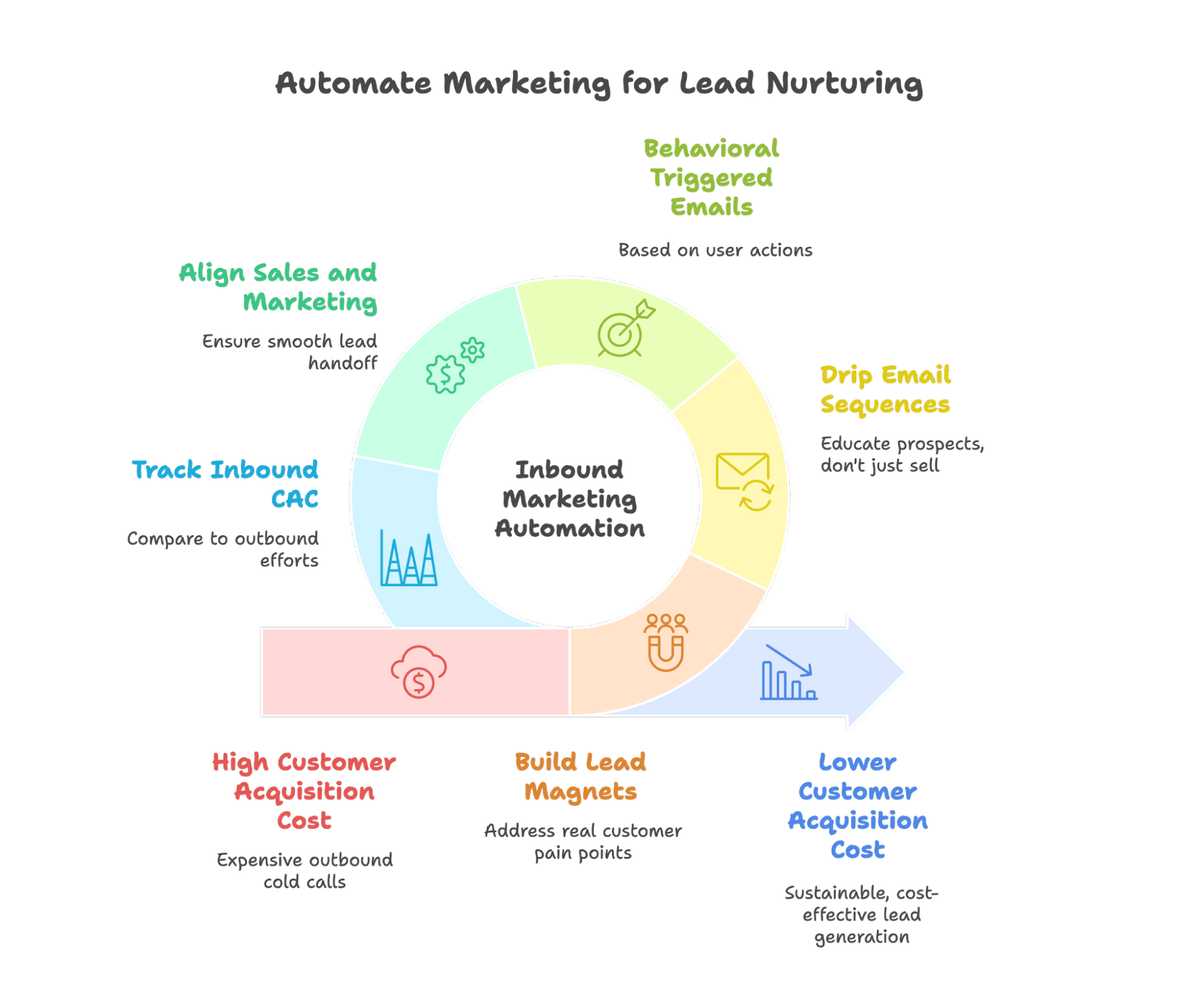
Marketing automation helps you do that without adding to your CAC. Use email workflows, lead scoring, and behavioral triggers to nurture prospects until they’re sales-ready. This keeps your funnel full while cutting down on manual follow-up.
Shore, a SaaS company for local service providers, switched to HubSpot’s Growth Stack and adopted an inbound model. The results came fast. Within months, leads grew 12x and customer acquisition costs dropped by 35%. Their CEO pointed out the difference: outbound cold calls were expensive. Inbound gave them a cost structure they could finally sustain.
To apply this, build lead magnets tied to real pain points. Use those to feed drip sequences that educate, not just sell. Trigger emails based on user actions, including downloads, visits, and form completions.
Or for an even faster approach, try using Persona AI by WeGrowth to generate these profiles automatically It creates detailed personas complete with audience insights and messaging cues simply by analyzing your website or a single landing page. This can save hours of manual research and ensure your nurture campaigns speak directly to the prospects most likely to convert.
It’s also important to align your marketing and sales teams so the handoff is smooth. And always track CAC from inbound vs. outbound efforts.
CAC in SaaS doesn’t represent a marketing metric. You can think of it more as a business health indicator. Since SaaS companies depend on recurring revenue and retention, even small improvements in lead nurturing and funnel efficiency can drive significant reductions in CAC over time.
Let automation do the heavy lifting so your team can focus on closing.
Sometimes the fastest way to lower CAC isn’t in your ads or content. It’s in the product itself.
When users hit friction in your sign-up flow or get confused by unclear pricing, many drop off before converting. A smoother onboarding experience and transparent paywalls help turn more users into paying customers, without spending more on acquisition.
Blinkist tested this by redesigning their paywall. They introduced what they called the “Honest Paywall,” which shows a clear timeline, feature breakdown, and a reminder before the trial ends. Trial conversions went up by 23%. Complaints dropped by more than half. The lesson is that when users trust what they’re signing up for, they stick around.
Other teams saw gains from small UX shifts. One company added a simple three-slide onboarding carousel before the paywall. Trial opt-ins jumped from 2% to 15%.
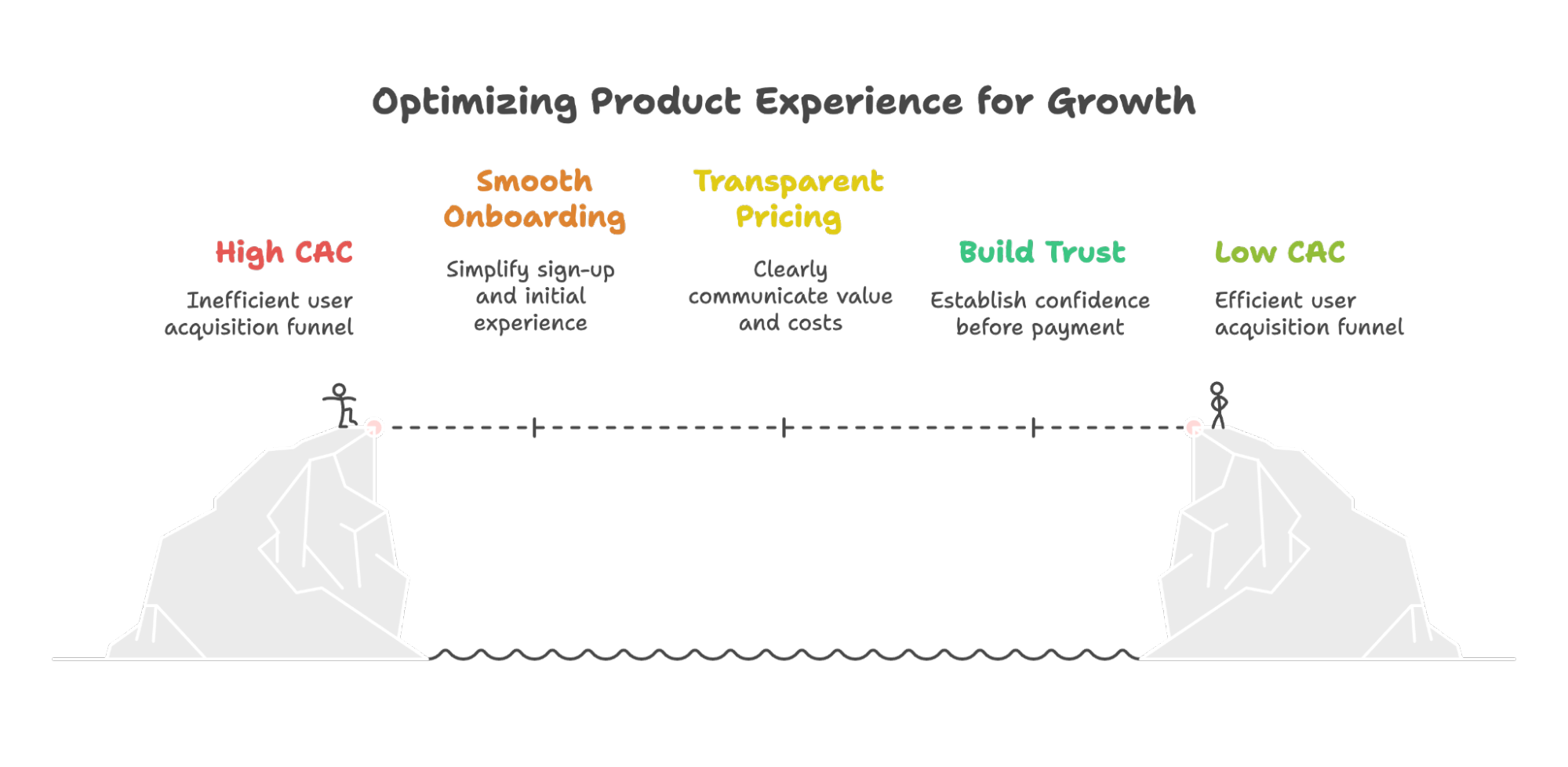
To apply this, test how your pricing and onboarding are presented. Be clear about what users get and when. Use onboarding flows to build trust before asking for payment. And when pricing, start high, you can always apply discounts later to capture perceived value.
The easier it is to try and buy, the lower your acquisition cost per paying user.
| Ready to take control of your CAC and growth pipeline? |
|---|
| WeGrowth is your full-stack SaaS growth team plugged into your business and focused solely on performance. From paid acquisition to conversion optimisation and retention, we bring the frameworks and execution that drive sustainable results. |
| --- |
| Get in touch with our team and start building your low-CAC engine. |
| --- |
People trust people more than brands. When users talk about your product, answer each other’s questions, and share results, they create a kind of marketing you can’t buy.
Community-driven growth helps lower CAC in two ways: it spreads through word-of-mouth and improves retention. The more engaged your users are, the less pressure there is to spend on paid channels.
Research shows that customers acquired through community channels come in at 30–45% lower CAC and tend to stick around longer. Companies that define clear roles and value for members also see conversion rates improve by 67%.
To make this work, start with a purpose.
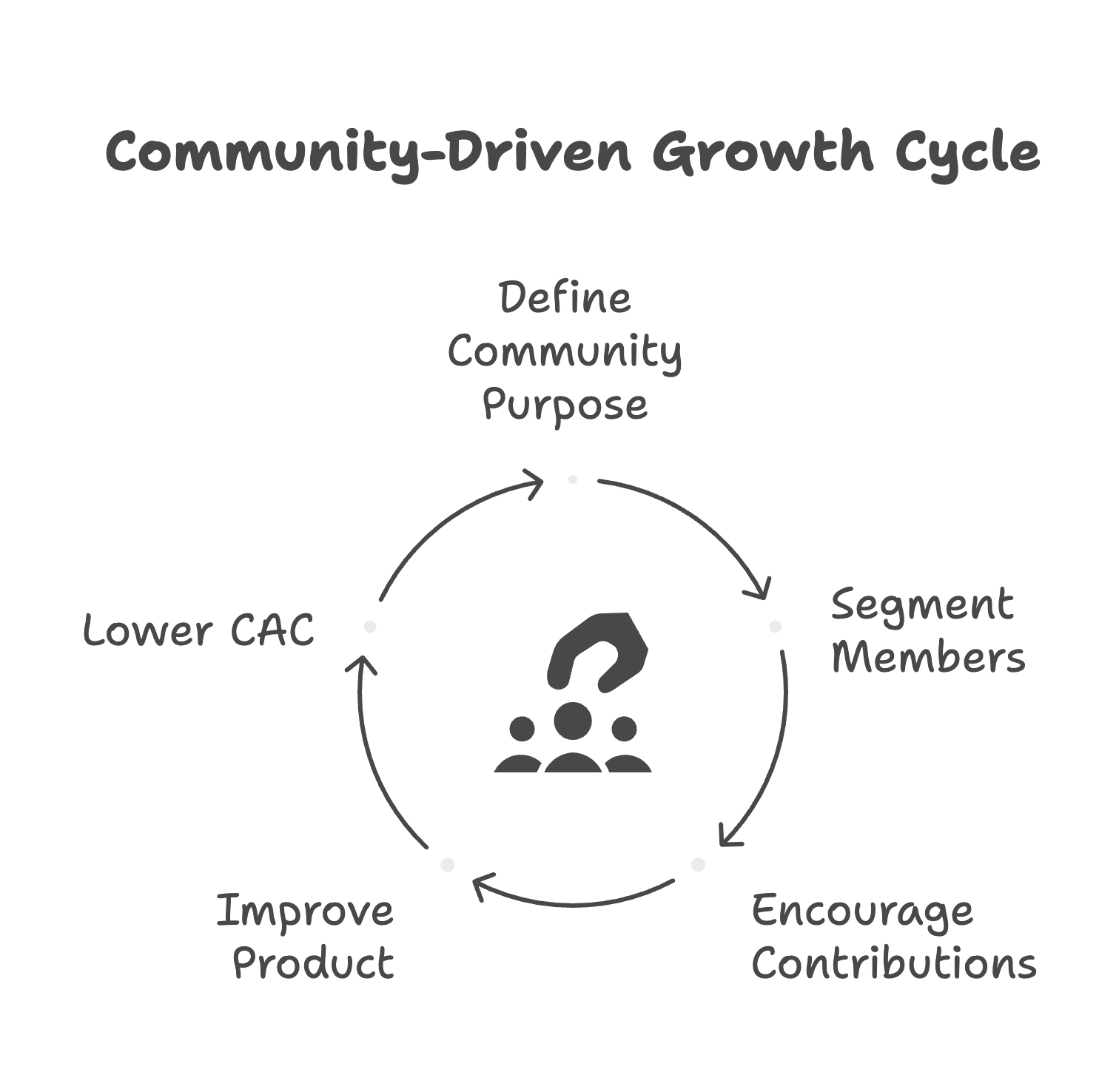
Ask yourself why your community exists in the first place, and who is it for?
Segment your members, including ambassadors, new users, and power users, and speak to each group differently. Encourage contributions with small incentives like early access or member-only content. Use what your users say to improve the product and create better content.
But before running any new tests, you should always make sure to have clear visibility into the numbers that matter most. A SaaS growth marketing KPI dashboard template can centralize CAC, ROAS, LTV, and conversion metrics into one view, which could help you quickly identify which campaigns improve profitability and which drain resources. With this data in hand, you can make precise optimizations that steadily bring CAC down.
Not every lead is worth the same. If you’re spending the same amount to acquire a small account as a large one, your CAC won’t stay sustainable for long.
Account-based marketing (ABM) flips the funnel. Instead of marketing to a broad audience, it aligns sales and marketing around a list of high-value targets. Every message is tailored. Every touchpoint is planned. The result is fewer wasted clicks and a lower cost per qualified opportunity.
Chatter Buzz, a digital agency, made the shift from broad inbound to ABM using RollWorks. Over eight months, they ran nearly 150 campaigns. One A/B test increased sales contact activity by 32%. More than 90% of target accounts saw at least one ad. Their regional campaigns reached a 20% win rate and drove over $500,000 in revenue. By narrowing their focus, they managed to cut CPM by 80% and CPC by 86%.
To make ABM work, start by choosing the right accounts. Get input from sales. Build campaigns with content, ads, and emails designed for those specific companies. Sync it all in your CRM so you can track touchpoints. Watch the cost per account, not just the cost per click.
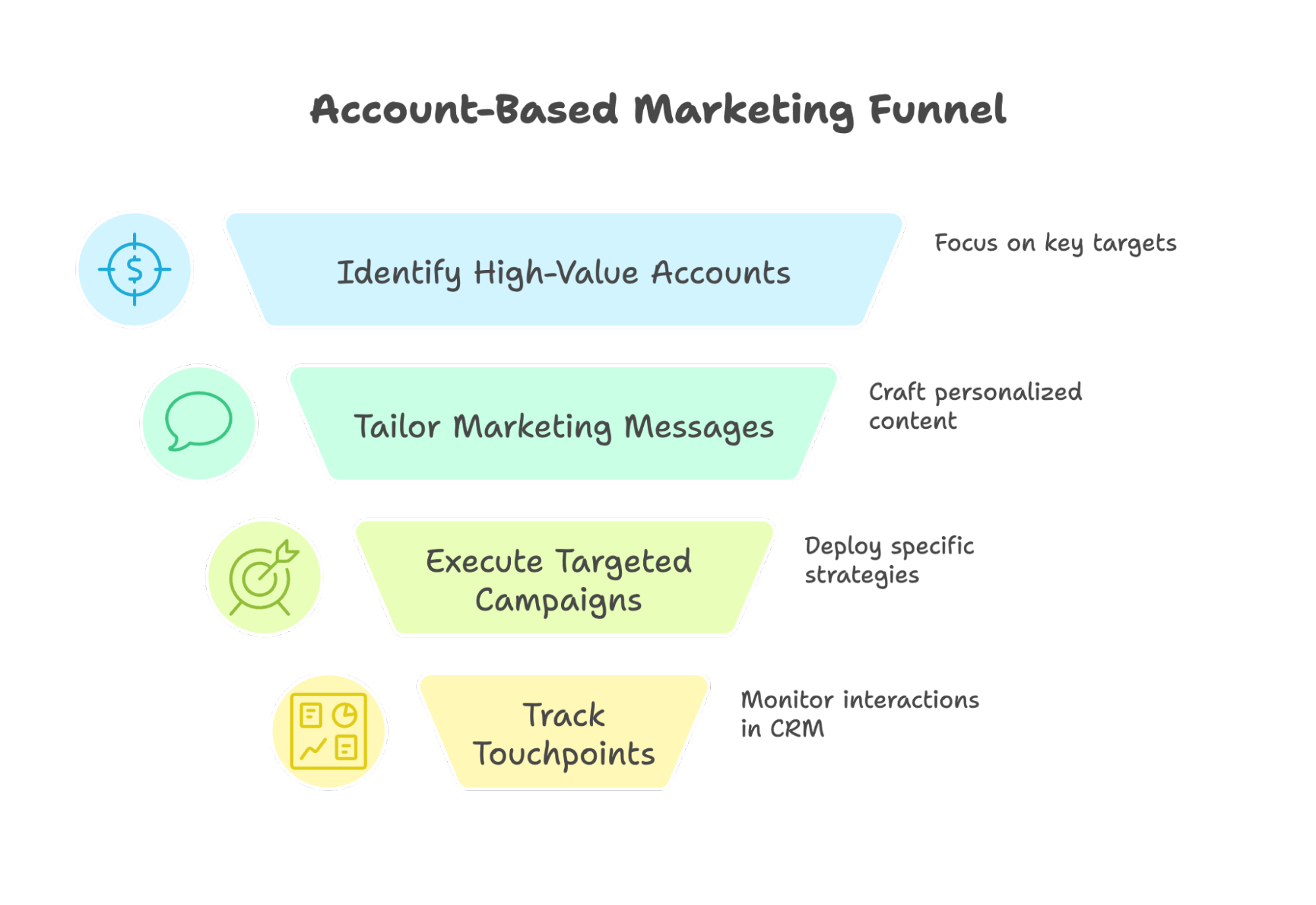
The more focused your effort, the less you waste, and the better your CAC looks.
People buy from people they trust, and creators already have that trust with their audiences.
Partnering with influencers lets you tap into niche communities without building everything from scratch. When done right, it generates high-quality leads and cuts down ad costs by replacing cold outreach with warm introductions.
Fabletics, for example, used the CreatorIQ platform to manage ambassador partnerships. Their focus on long-term collaboration and performance tracking paid off: customer acquisition costs dropped by 30%.
World of Tanks ran a YouTube-focused campaign with NeoReach.
The result was a:
All through creator-led content.
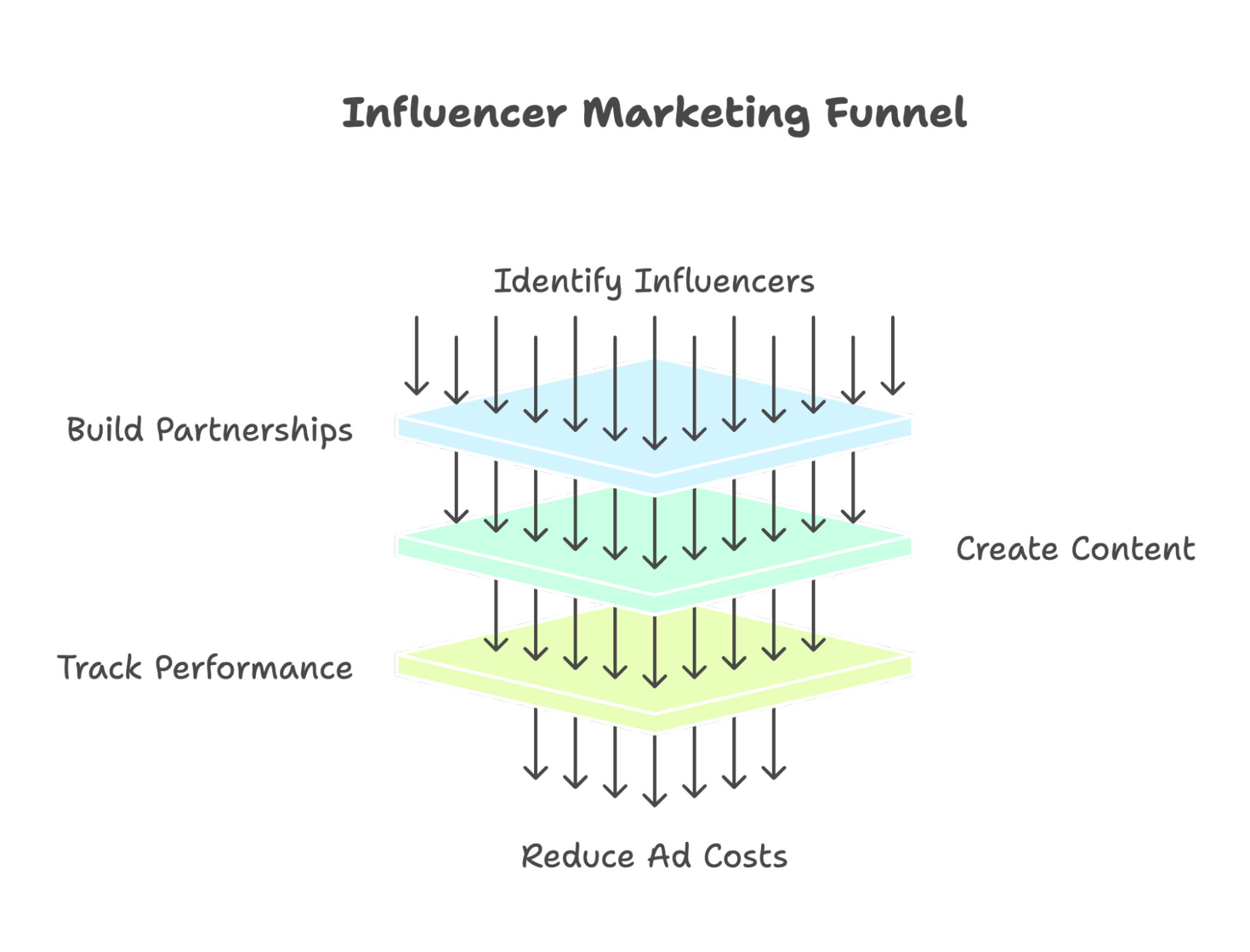
To make this work, start with fit. Don’t chase follower counts. Instead, look at engagement and audience match. Give creators freedom, but align on key messages. Track everything: CAC, ROAS, LTV. And if budgets are tight, test with micro-influencers or community voices who already use your product.
Influencers can drive awareness, trust, and conversions, all without the rising costs of traditional ads.
So, how can I improve CAC for my SaaS startup?
There is no short answer because improving the CAC for your startup isn’t just about implementing one strategy. It’s more about combining different efforts simultaneously: improve targeting, boost conversion rates, build organic traffic, and retain more users to drive down the effective cost over time.
And in case you’re ready to go deeper, claim your free SaaS growth marketing plan already today.
Cutting customer acquisition costs should always be about building a system that works across different channels, adapts with data, and evolves through testing.
From paid media experiments to influencer partnerships, community building, and SEO, lowering CAC takes multiple levers working together. Some tactics deliver fast wins. Others compound over time. The key is staying flexible, tracking what works, and moving the budget where it makes the most impact.
Or simply book a growth strategy call with WeGrowth. We’ll help you build a customer acquisition engine that scales, without burning through your budget.

A customer persona is more than just a description of your target audience – it’s a deep, research-backed profile that tells you who your customers are.

Your go-to guide for SaaS growth marketing metrics in 2025. Explore key metrics like LTV, churn and MRR to optimize acquisition, retention and revenue.

Boost your growth with our SaaS Growth Marketing KPI Dashboard Template. Track key metrics, MRR, ad performance and more.
Want more insights?
Explore all blog posts or check out our growth templates.
Our free growth marketing plan is an opportunity to dig deep into your SaaS and uncover growth opportunities. No strings attached, just value.